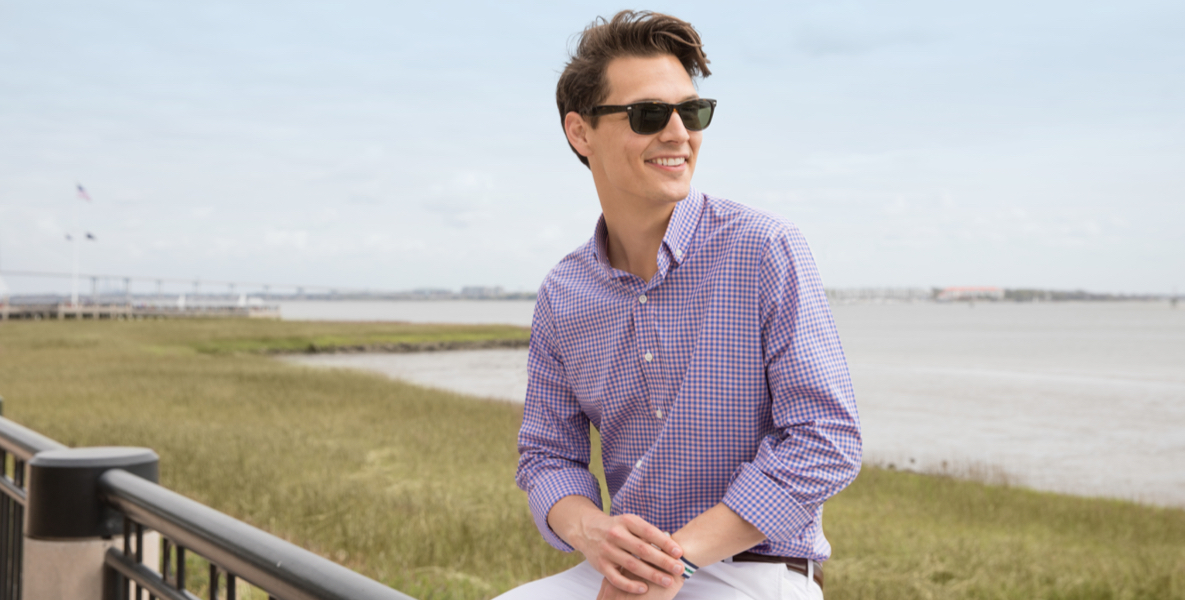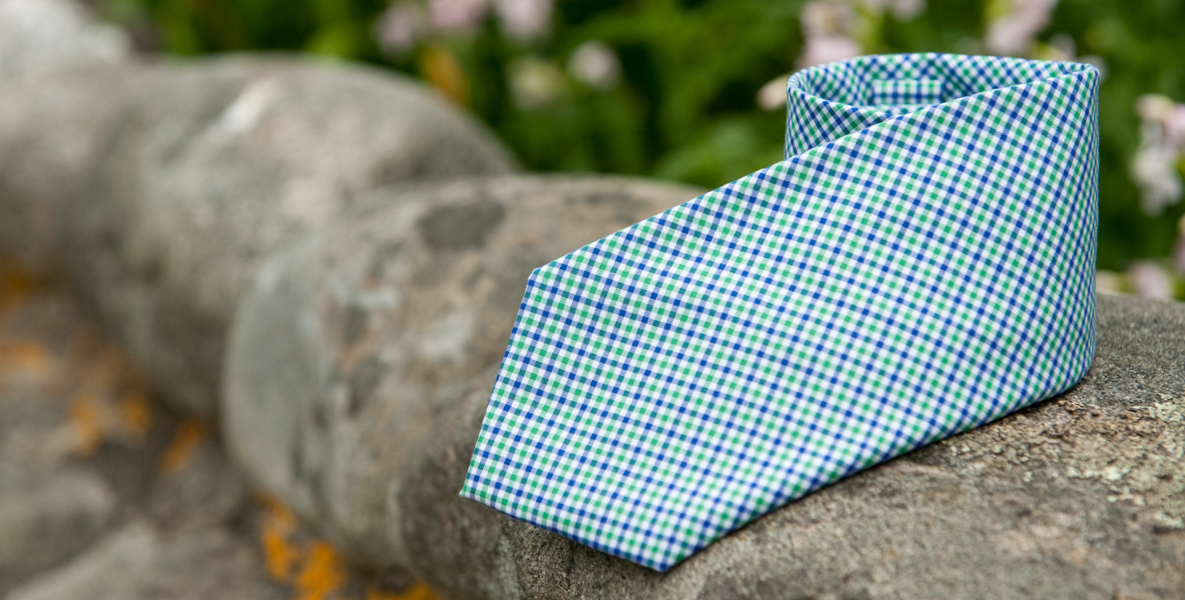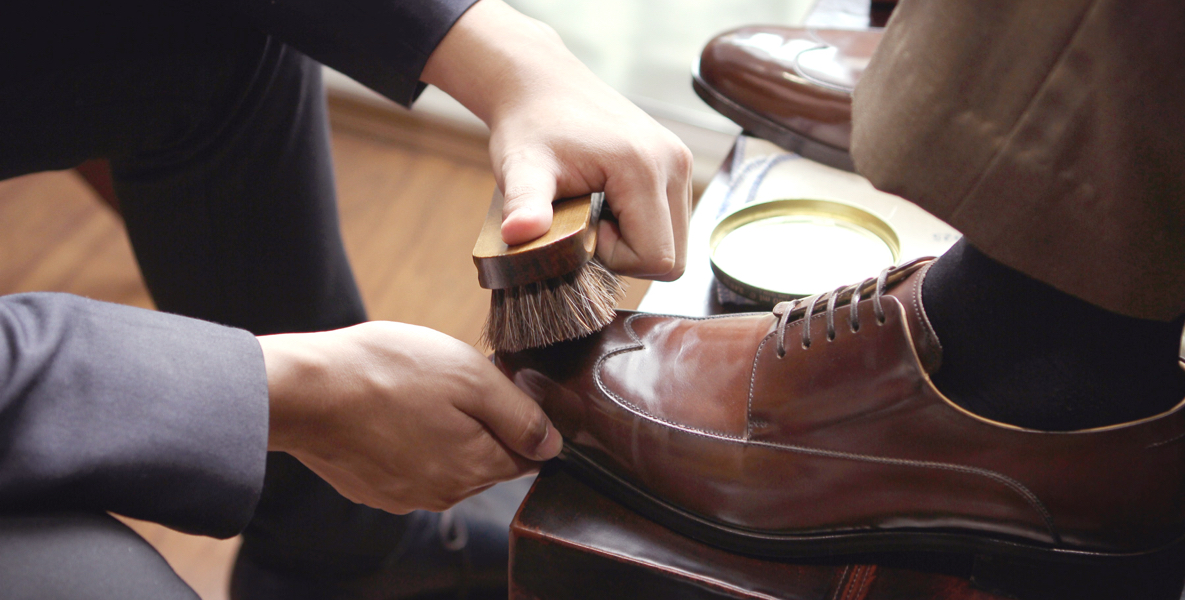
Whether you are moving up the corporate ladder or your menswear fashion sense is maturing, you may feel the itch to invest in a new or upgraded wardrobe. While there may be the occasional demand to add some one-off items to your closet, you need not overspend on new clothes at the expense of ignoring the ones you already have.
There are simple ways to make your office clothes last longer and avoid unnecessary trips to your local department store, custom menswear showroom, or even your tailor. At Alton Lane, we understand what it takes to safeguard your office clothes against needless wear and tear. We know it’s possible to keep your costs down and your wardrobe stocked with premium items that will allow you to present your best-dressed self in the workplace.
This guide looks at general tips and tricks to ensure proper longevity of your suits, blazers, shirts, ties, and shoes—both old and new—so that you can focus on how your clothes make you look and feel instead of figuring out how to replace them.
With competent planning and comprehensive care, it’s possible to make your office clothes last for years. You’ll want to incorporate them into the mix of new clothes that you’ll inevitably welcome into your closet as your style, taste, and needs evolve over time.
GENERAL TIPS & TRICKS
- Don’t wash or dry clean too often
- Whether your suit is off-the-rack, made-to-measure, or bespoke, you may have it dry cleaned to remove stains and protect your suit’s fabric from the elements. However, dry cleaning too often can damage your clothes.
- Minimize the frequency with which you rely on the liquid solvents that dry cleaners use to remove tarnishes to maximize the long-term usability and luster of your garments.
- Note that dry cleaning can actually alter the suit’s structure and original shape during the cleaning process as water tends to swell and stretch fibers.
- Rotate so as not to over-wear any one garment or pair of shoes.
- Your favorite shoes, suits, and other apparel can become prematurely worn out due to over-wearing.
- Shoes need to air out and recover from time spent commuting and working hard to get you from point A to point B.
- Rotating your office clothes not only ensures that you’ll present a dynamic style in the workplace, but it will stave off various forms of inevitable weathering.
- Hang-dry or dry-flat items washed at home, as heat can be rough on your clothes
- Avoid unnecessary heat while caring for your office clothes.
- Steam cleaners and hanging your suits in a steam-filled bathroom can have positive effects on both your washed and unwashed garments.
- Use drying racks or find ample space to dry your washed clothes on a flat surface.
- Laying your clothes out to dry protects against the negative effects of dryers that tend to reduce the life and elasticity of your favorite items.

SUITS AND BLAZERS
Find One That Fits
- A well-fitting suit serves more than just the need for a sophisticated look—it also protects against damaging fabric tension.
- Invest in a custom suit or alterations that prioritize an optimal fit to avoid fiber loss and breakdown.
- Invest in a relationship with a talented tailor who understands your unique needs to have a wearable suit that fits your particular shape.
Get an Extra Pair of Trousers
- Not just a sales tactic, discounts on a second set of trousers can help ensure the longevity of your next suit.
- Pants break down more quickly than suits or jackets and their original color is known to depreciate as well.
- Why the extra wear and tear? Trousers tend to experience more seam stretches and damage in the seat of your pants with all the sitting, standing, and walking.
- Frequent rotation of the two pairs of trousers helps to certify a long lifespan of your entire ensemble.
Ditch the backpack / messenger bag
- While backpacks and messengers bags provide practical storage for commuting professionals, the weight of the straps stress a suit jacket’s shoulder fabric, causing holes to form over time.
- Briefcases and other timelessly designed types of bags will provide the storage you need without the devastating effects on your jackets.
 Store suits and blazers properly
Store suits and blazers properly
- Invest in wooden hangers; they absorb harmful moisture.
- Rounded plastic hangers provide adequate support as well. Avoid wire versions that stretch and crease your fine fabric.
- Let your garments have breathing room among the other items in your closet.
- Store your office clothes in a cloth cover after drying. This allows for constant air flow when your dresswear is not in use.
- Protect your clothes from uninvited insects by storing them in canvas hanger bags.
- Place some dry herbs or lavender, known as a winning moth repellent, in jacket pockets to keep musty smells away during seasonal storage.
Cleaning
- Trips to the dry cleaners should be limited to 2-3 times a year for pieces that you wear often. Annual trips should suffice for less-frequently worn garments.
- You can tend to your office clothes in between washes by giving them a light brushing with a soft-bristled brush.
- Never use metal brushes or engage in over-scrubbing as to avoid creating holes or encouraging discoloration.
- Use cold water and less detergent than you would with less delicate garments when washing your office clothes at home.
- Send your extra trousers to the cleaners at the same time as the original paid so fading occurs more evenly to both items.
Suit travel tips
- Try not to pack your jacket away, if possible, as inevitable creases will emerge when stuffed into your luggage.
- Alternatively, wear the jacket during your commute by car, train, or plane until you reach your destination—preferably your hotel—where you can hang it up properly in a steamed bathroom or closet.
- If it’s necessary to pack your dresswear, remove items from pockets, lay jacket on its back, and fold the bottom part of the jacket up carefully to reduce hard creasing.
- Stick softer items like socks or sweaters inside the suit jacket to optimally share luggage space and provide additional support.

SHIRTS
Invest in high-quality natural fiber fabric
- Spend a little extra money on well-made shirts formed by high-grade materials that will last.
- The fabric content of your garments directly informs its durability potential.
- It’s advised to favor natural fibers like cotton and wool rather than synthetic fabrics like polyester and spandex.
- While blended fabrics offer the benefits of more than one type of fabric in one singular garment, blends can also shrink at different rates and deform your shirt.
- On your quest for superior craftsmanship, avoid shirts made of low-grade fibers, fabric that feels thin and frail, loosely spun yarn, bubbling seams, and fraying threads.
Be careful with elbow-leaning
- Leaning on your elbows at your desk leads to unsought fabric breakage.
- Be sure your shirts have proper sleeve lengths and widths to eliminate cause for concern if you’re a habitual elbow-leaner.
- Sleeve measurements should be taken from the end of your shirt collar and down your bent arm ending where your hand meets your wrist.
- Consider putting smooth tape, like packing tape, over your favorite leaning spot to reduce wear.
- If you prefer to arm your shirts with protective gear, think about adding patches, contrasting fabric, or simply choose thicker shirt fabrics.
Opt for a complementary fabric in the collar and cuffs
- Express and protect yourself when selecting contrast collars and cuff accents.
- This custom option allows you to add subtle design enhancements that make your shirts more versatile for a more timeless look.
- The second layer of fabric also reinforces the strength of those shirt areas for added protection.
- Complementary fabric also helps retain the shirt’s intended shape and masks discoloration.

TIES
- Ties are delicate accessories that need to be tended to if you plan to keep them around for the long term.
- Hang most ties on a rack (or your belt hanger) to fend off creases and folds but consider material and fabric when deciding upon proper hanging location.
- Always untie knots and smooth out the material before hanging.
- Don’t hang knits, but rather roll and store in a drawer to avoid stretching.
- Quickly remedy stains with cold water, seltzer water, or club soda as ties are delicate and require immediate action to remain clean.
- Avoid shape depletion by never pressing your tie in the cleaning process.

SHOES
- Apply a water-resistant compound to new or freshly-conditioned shoes
- Wax-based polishes are preferred as they nourish your shoes and give them a protective coating against dirt, salt and light moisture.
- Spray-on polishes provide anti-stain protection and are known to add temporary shine but may actually prevent leather from breathing properly.
- Use quality shoe trees
- Shoe trees help shoes retain their original shape which directly contributes to a long lifespan.
- Wood, especially cedar, is ideal for absorbing moisture and odor.
- Other alternative materials for competent shoe trees include beech, lime, and alderwood.
- Balled-up newspapers may serve as a fine alternative if you’re on a budget.
- Learn to polish
- Quality shoe polish will add moisture back to your worn shoes protecting them from grime.
- Apply shoe polish generously with a soft cloth after cleaning off dust and dirt or accumulated residue.
- Use a toothbrush to apply in tight spaces for even and complete coverage.
- Put your polished shoes in shoe trees and let them set for an hour or two so polish can sink in.
- After up to two hours, be sure to brush off excess polish.
- Use a soft cloth or old t-shirt to polish shoes with a series of small circular motions to achieve a remarkably shined look.
YOUR LONG-LASTING OFFICE CLOTHES
If you consider these important guidelines in both selecting and maintaining your suits, blazers, shirts, ties, and shoes, there are more benefits than just making your office clothes last longer. You will hold onto more of your well-earned income, become a more environmentally-conscious dresser, and feel a new sense of pride about the clothes you have hanging in your closet that you know will only last if well maintained.



